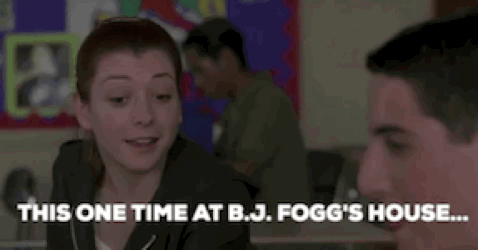Live Video Streaming
Two Content Trends to Stay in Tune With
By River Crane
Trend #1. Authentic, Transparent, and Experiential.
Over the past couple of years, growing marketing buzz has relentlessly touted these words (as well as purpose, but that’s another month’s worth of content to tackle). And as brands have grappled with these terms, we’ve seen some epic failures (Pepsi) and some colossal success stories (Dominos).
Success Snapshot:
Dominos’ “Pizza Turnaround”
How They Nailed It
- Listened to customers
- Responded honestly and publicly
- Connected and reached out personally
- Hell, they even went the extra mile and paved our potholes.
Trend #2. Live Video.
Even more recently, we’ve witnessed the rapid growth of sites like Twitch (everything you need to know about it here), marketers using live video (95% of them!) and an emerging consumer desire for live content in general.
…Like, a major desire. Four out of five people (80%) would rather watch live video from a brand than read a blog, and 82% prefer live video from a brand to social posts – that’s a lot of live video fans that we can’t afford to ignore.
Get more wow-ing live video stats here.
So, what could the two trends possibly have in common, you ask?
Well, quite a lot. Let’s start with the ingredients of trend number one – experiential, authenticity, and transparency. This type of work requires:
Listening to your audience
Responding openly and humbly
Connecting personally and publicly.
And now let’s take a look at what trend number two, live video, entails:
Listening to audiences
Responding, often in real-time
Connecting personally and publicly to fans and critics
Revealing some humanity behind a logo
And why should we care?
We should care because we now have an opportunity to produce strategic content that also conveys the authenticity, transparency, and experience that audiences want. A live content experience can also smoothly direct audiences to our strategically-crafted written and graphic content afterward.
I’m not completely sold yet…
Then let’s wrap this into a topic you have bought into. That’s right, you guessed it… BJ Fogg and Behavior Design!
Mhmm, live video is highly accessible. And that’s good news for us budding psychologists!
In accordance to the behavior design model, live events are nice and easy to check out. They exist on platforms that audiences routinely monitor, and with the swift click of a brand’s page, one can start viewing.
What’s more, live streams will often appear front and center on our audience’s timelines without requiring them to snoop around. We can thank “the algorithm” that we love so dearly for this seamless opportunity. The same goes for Instagram, where posts with more buzz (as videos in Stories tend to accumulate) get prioritized for us.
Overall, accessing live content is much simpler than dialing a backed-up 1-800 number or navigating through tab after tab on an old blog. The live video model is a great fit for making our desired behaviors easy to do.
What’s the bigger picture?
Besides being easy for audiences to watch, how else does live video keep us thinking authentically, experientially, and transparently?
Live video:
Provides a behind the scenes glimpse, revealing the true personalities behind a brand
Allows for a more meaningful, two-way conversation in a marketplace inundated with impersonal messaging (Check out Experian’s #creditchat for a good example)
Is a more approachable and intriguing format for viewers to gain information
Provides a more genuine platform for a call to action
These seemingly loose, un-produced events will lead viewers more naturally to the perfectly crafted websites, blogs, infographics, and press releases we’ve drafted in advance.
So while it might not always bring national attention to a brand, and it isn’t going to deliver pizza and fix our infrastructure, live video will continue to play a critical role in providing experiential, authentic, and transparent content. It will tie said content back to our strategic content and our goals, delivering results above and beyond our client needs.
Keeping live video in mind will ensure seamless journeys from experiential events to precise content, a fruitful result for all parties involved. That is, live video will humanize our clients’ brands, connect authentically and entertainingly with consumers, and ultimately help attain strategic communications goals.
Here are some great ways to incorporate live video:
- Q&As
Product trainings
New product or tech launch – like brand.live offers
Challenges or promotions
Partnerships with influencers – 10 examples here
Behind-the-scenes looks – like Dunkin’ did
Grand opening events
Make up something new!
And more importantly, how to not blow it:
Don’t fail to prepare for the worst of technical difficulties (*cough* Buzzfeed *cough*)
Check and double check your connection, and then check again.
Beware the trolls. Don’t let all comments or questions come through
Minimize background noise
Get the lighting set up correctly!
What the hell was this, Target?
Here are some more Do’s and Don’ts for Facebook Live specifically.
Other helpful links
[Study] 95% of marketers are banking on live video this year, Clickz
The Best And Worst Of Real-Time Marketing: 4 Lessons For Marketers, Fast Company
5 Brands That Prove Live Video Is The Future of Content Marketing, Jeff Bullas
Introducing the ‘content conversation’: The new twist in content marketing using live video, Marketing Land
How to Build a Successful Live Video Marketing Plan, Forbes
Live Video Marketing Guide: Periscope Best Practices, Switchboard

